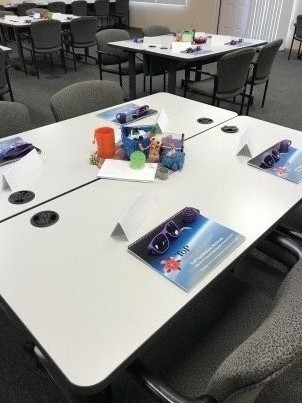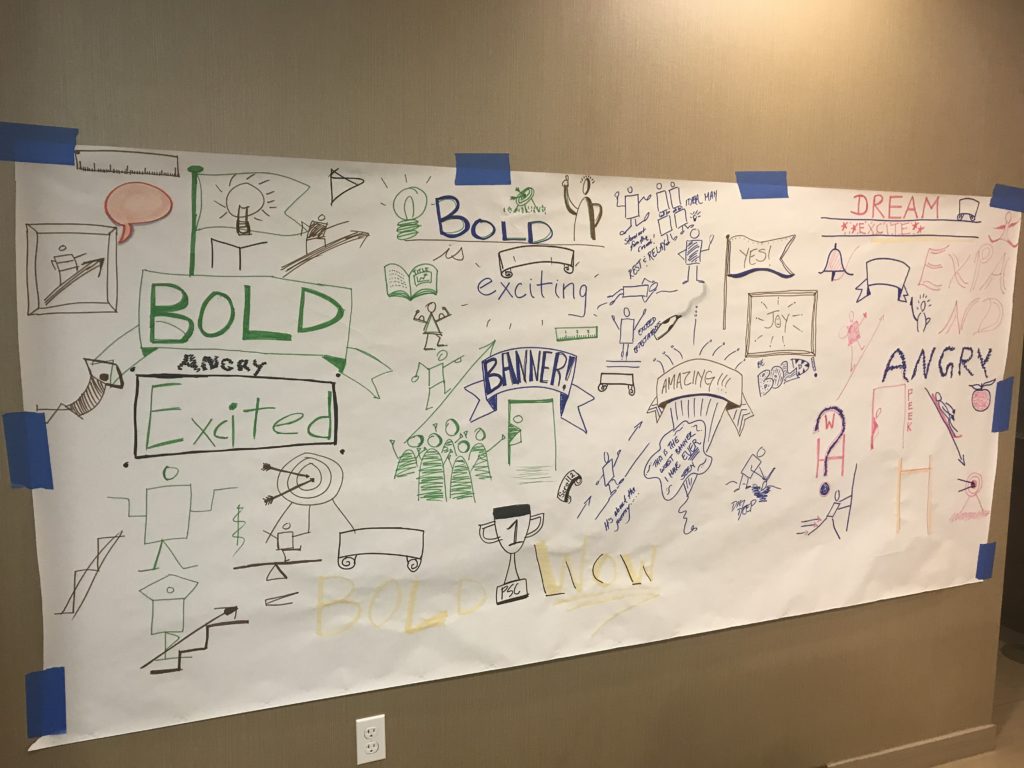Environment Matters: Engaging the Five Senses

It’s almost become a running joke with our clients. It regularly takes us an hour or longer to setup for both facilitated meetings and educational presentations of just about any duration. We’re the ones rolling in at least one suitcase and a bag on each arm filled with our secrets to success.
Whether you’re leading a full-day strategic planning retreat or a 75-minute breakout session, the environment plays an important role in setting the tone for the meeting. Ignore the environment and you’re affecting both the first impression of your participants and their ability to effectively engage with your content.
Consider this:
- If the room is chaotic, groups can’t focus.
- If the room is inhospitable, groups often retreat.
- If the room is familiar, it feels like every other meeting.
Groups need to be creative if they’re going to solve challenging problems. When they can’t solve their own problems within the context of their often-uninspired day-to-day workspace, they frequently turn to others for strategic planning, education and consultation support.
And if we provide them the same type of environment they already have access to in their own offices (e.g., the formal, colorless boardroom), it’s likely we’re going to elicit the same type of responses or solutions they could have easily identified on their own.
Let me share with you an example. Post-World War II, millions of families with stable employment couldn’t afford the cost of preexisting housing. As a result, cookie-cutter neighborhoods sprung up because they were efficient and inexpensive.
Now, of course, these neighborhoods are considered less desirable. Think about your own home. Its value comes from its uniqueness, as well as the extent to which it satisfies your needs and wants. You’ve likely invested in a variety of tech gadgets and upgrades to help you relax and to make you feel comfortable and creative.
Herein lies the problem: We can’t offer the same type of cookie-cutter facilitation and learning experiences if we endeavor to spark new life and creativity.

But a creative and welcoming environment doesn’t mean you simply set up the training room with a standard “innovative” room set each time. Or just throw out a few toys on the tables. You’re not simply checking a list.
Instead, consider what type of environment each group needs to achieve its desired outcomes and customize accordingly. And be sure your creative spaces are authentic to you – but also stretch yourself. This is an opportunity for you to grow, as well.
Following are just a handful of tactics to encourage a more innovative facilitation or learning environment:
- Provide visual interest through the use of color, graphics and living things.
- Provide sound/music to help fill the void of the room and to lift people’s moods.
- Provide something to taste, such as mints, candies, chocolates and beverages.
- Provide tactical elements, including fidget and stress toys, paper and markers.
- Provide scents – like an oil diffuser – throughout the room.
The more deeply you encode the experience by engaging all five senses, the more likely your participants are to engage in and remember both the experience and the content.
Human beings strive to be efficient; when the room is set the way it always is, the brain jumps to the conclusion that it knows what to expect. This often leads to participants checking out early or not engaging at all.
When we switch things up, we trigger something in the brains that says: “I don’t know what’s coming next; I better pay attention in case it’s something really good.” In turn, participants strive to determine how best to engage with this new approach they’ve not yet encountered and it keeps them on their toes.
What are strategies you use to keep participants on their toes?


